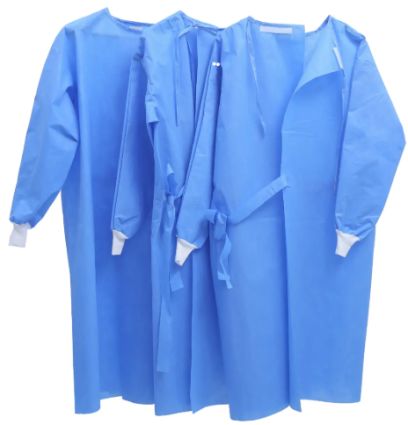Virus Protection Clothing- Essential for the Battle Against COVID-19

The debate is still raging on whether the transmission of the COVID-19 virus occurs via air or through droplet contact. However, there is consensus among the medical authorities around the world on the use of virus protection clothing to contain its spread.
Given the highly contagious nature of the virus, wearing such clothes is particularly crucial for doctors, nurses, and other healthcare personnel who interact with COVID-19 patients and are at considerable risk from the proximity. It is also indispensable for patients and their visitors to prevent them from spreading infectious microorganisms to other people.
Virus Protection Clothing is Essential for the Battle Against COVID-19
The novel coronavirus has had a devastating impact on human populations worldwide, and, as yet, there is no definite cure for it. Preventing its spread as much as possible is, therefore, a top priority. And, along with implementing national and international lockdowns, there have been public announcements in different countries advocating the policies of social distancing, wearing face masks in public, using hand sanitizers, and washing hands frequently.
The use of personal protection equipment also plays a prominent role in limiting the spread of the viral disease. It impedes the virus’ ability to transfer to and fro rapidly from people and inanimate objects.
Along with face masks, face visors, and eye protection glasses, such equipment includes virus protection clothing like hospital protective gown, tops, trousers, head covers, gloves, and shoe covers. These cover the wearer entirely and act as a barrier against infection-causing microorganisms. They are also tear-resistant, wear-resistant, and puncture-proof. Additionally, they are comfortable to wear, comply with OSHA safety regulations, and are cost-effective.
In hospitals and other healthcare settings, it is the only way to prevent healthcare workers from succumbing to the disease. They can only continue to care for infected COVID-19 patients if they have such virus protection clothing and other personal protection equipment to safeguard their health.
Virus protection clothing has the following benefits:
- Its high pathogen resistance protects the wearer from infectious microorganisms.
- It prevents infected liquids and bodily fluids from coming into contact with the wearer.
- It protects the wearer if they come into contact with infected solids and surfaces.
- In the case of COVID-19 patients, it prevents the wearer from infecting health workers and other people with whom they are in regular contact.
- It protects vulnerable patients with severe health conditions and weakened immune systems.
Shortage of Virus Protection Clothing
Unfortunately, the lockdowns that governments around the world have implemented to contain the virus have severely impacted the manufacturing sector that produces personal protection equipment. Manufacturers are struggling to keep up with the growing demand, and that has led to a general shortage of virus protection clothing and other necessities. That has led the authorities to call for reserving the use of high-level virus protection clothing only by medical personnel in high-risk situations.
So, the doctors, nurses, and medical staff who work round the clock with COVID-19 patients are the ones that should get priority access to virus protection clothing and other personal protection equipment. It is their front-line defense that has been containing the pandemic havoc to a large extent. It is scary to imagine what would happen if that were to collapse, and there were no longer competent healthcare workers available to assist and treat the increasing numbers of sick people.
Proper Use of Virus Protection Clothing
The efficacy of virus protection clothing depends to a large extent on its correct usage. For instance, hospital protective gowns are available in four levels of protection, ranging from minimal risk to high risk. The medical staff must seek out and wear virus protection clothing that suits their situation.
Additionally, they will have to discard and change virus protection clothing after specified hours of use. It is crucial to follow the manufacturer’s instructions on how to wear the clothes and in what order, and also follow the proper order in removing it. And the wearers must wash and disinfect their hands several times during these processes. Depending on the material of the clothing, it may be necessary to dispose of it afterward, or it may be possible to wash and disinfect it for reuse.

